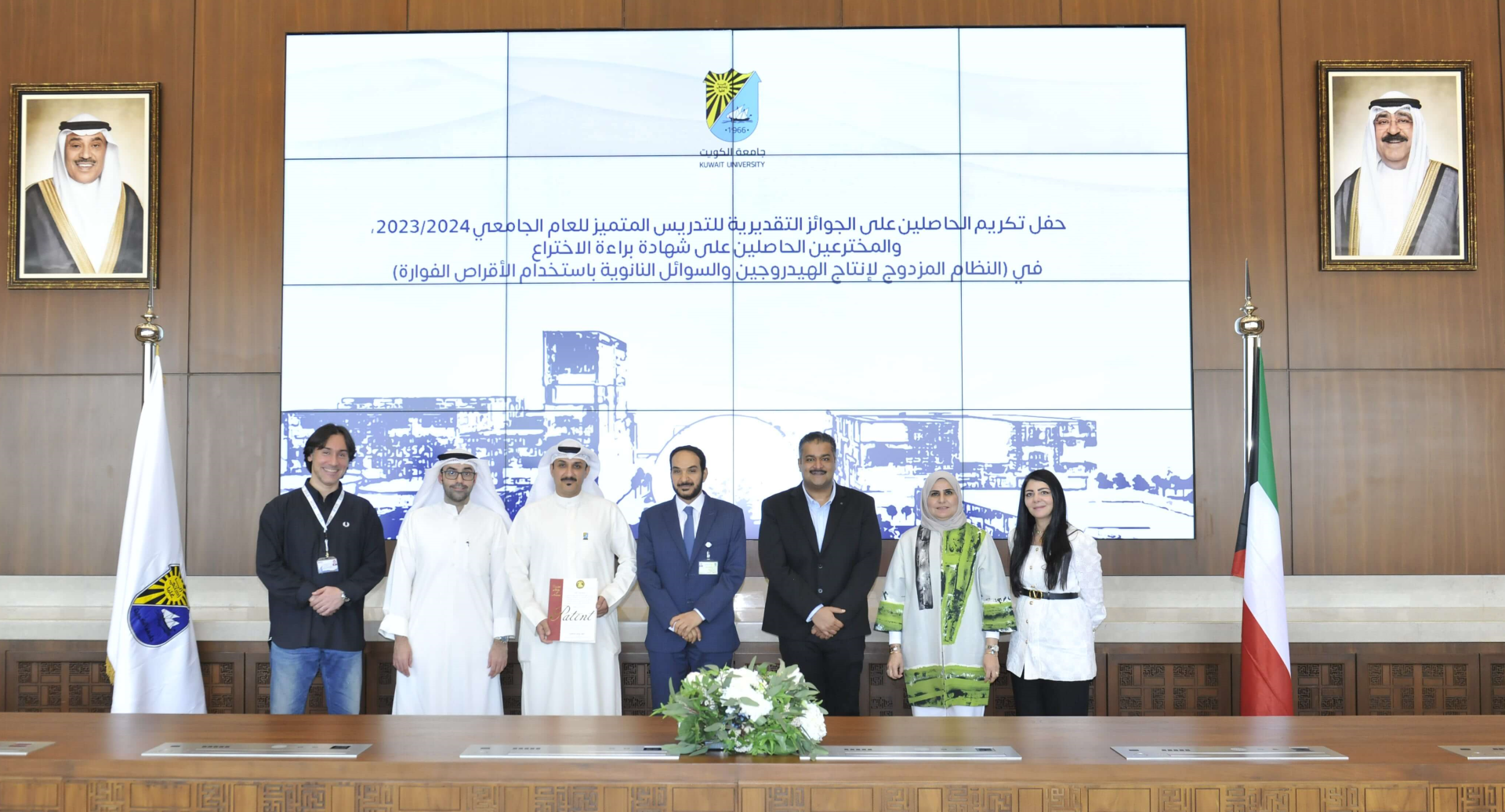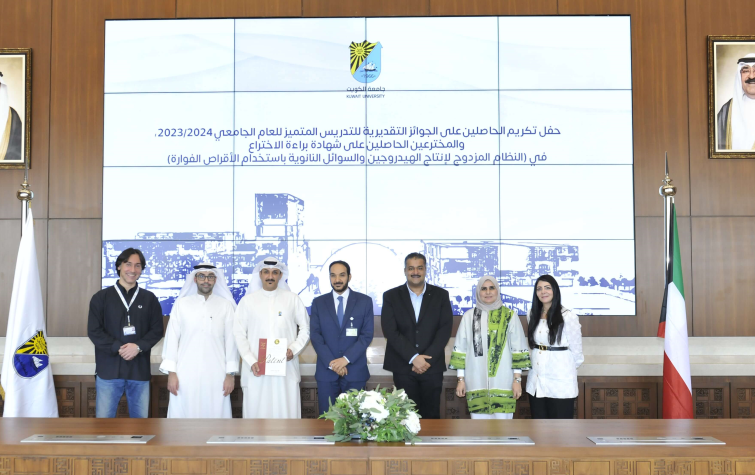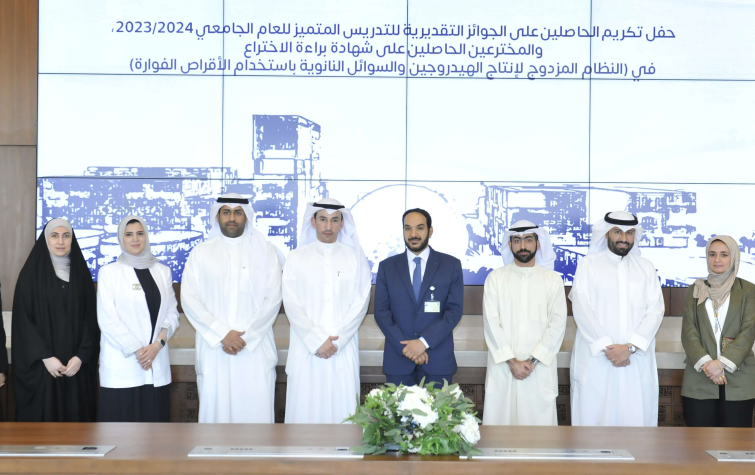
The Patents and Intellectual Property Rights Office at Kuwait University's Research Sector announced a new registered patent for an effervescent tablet-based dual system for hydrogen and nanofluids production.
On this occasion, Kuwait University honored the inventors Dr. Nawaf Al-Juwayhel, Department of Mechanical Engineering at the College of Engineering and Petroleum, Dr. Naser Al-Sayegh, Kuwait Institute for Scientific Research, Dr. Husain Bahzad, Public Authority for Applied Education and Training, and Ali Al-Sayegh, a PhD researcher from the General Secretariat of the Supreme Council for Planning and Development. The event was conducted under the auspices of Prof. Nawaf Al-Mutairi, Acting Kuwait University President, who congratulated the inventors expressing KU's pride in their distinguished achievement.
In expressing his pleasure and pride at such outstanding and internationally significant research outputs, Dr. Naser Al-Tannak, Acting Vice President for Research, commended the contribution of the patent recipients in enriching technology in Kuwait. Dr. Al-Tannak also reiterated KU's full support for innovative research providing all forms of facilitation and resources necessary to transform creative ideas into reality that serves society and promotes scientific progress.
On her part, Prof. Noriah Al-Kandari, Assistant Vice President for External Research Collaboration and Consultation, appreciated the significant efforts made by the Patents and Intellectual Property Rights Office in registering patents in a record period. She also signaled that the Office is currently developing work plans that go in line with KU's strategy and Kuwait Vision 2035.
Explaining the concept of the invention, Dr. Al-Juwayhel said that it is an innovative system based on a novel method of producing orange hydrogen and hybrid nanofluid suspensions using developed effervescent tablets that are prepared in advance for this purpose.
The invention features the ability to produce hydrogen and a suspension of hybrid nanofluids simultaneously, as the produced hydrogen can be stored in a tank containing hydrogen-attracting materials or used directly in a fuel cell to produce electricity. Meanwhile, the resulting suspensions can be used as advanced heat transfer fluid in various thermal applications.
The system has several additional advantages, such as high efficiency in energy production and reduced carbon emissions, making it a sustainable solution for power generation. The system also provides improved control ability to produce hydrogen and suspensions requiring only water and effervescent tablets and allowing production to be controlled on demand or according to user requirements.
The system also features the possibility of using both products independently and together through the integration of system components. This integrated system is of high value for industrial applications, specifically hybrid vehicles where electricity can be produced from the fuel cell with the help of hydrogen extracted directly from disks or storage. The resulting nanofluid, known for its higher thermal conductivity than conventional fluids, may also work as an advanced coolant for the vehicle’s combustion engine. This unique invention is expected to be widely approved by major hybrid vehicle manufacturers such as Toyota, Lexus, Honda, Hyundai, Kia, and Ford.


 Colored
Colored Grayscale
Grayscale



